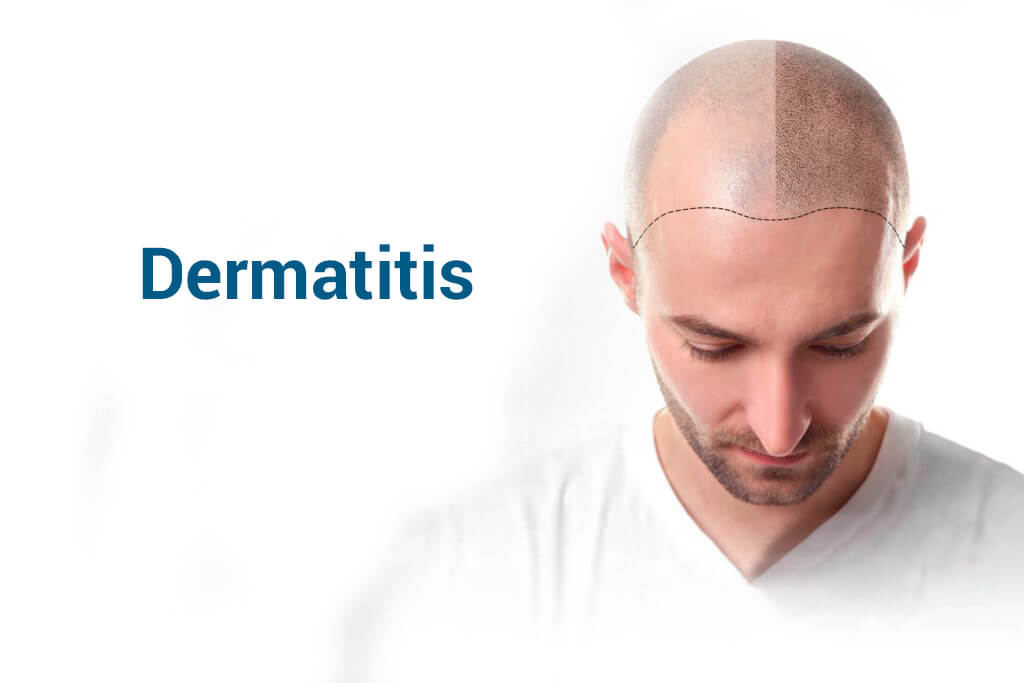DERMATITIS
Dermatitis is a skin condition that occurs quite often and of which there are several types. If you suffer from it or think you might, don't worry because there are treatments to improve it and make it disappear.
What is dermatitis?
Dermititis is a process of inflammation of the skin that results in the epidermis being affected by all types of exposure, either from external agents or from the ingestion or production of internal compounds.
There are several types: simple, atopic, contact, seborrhoeic, herpetiform and Berloque. Both the causes and the symptoms are different. In our case, the one we are most interested in is seborrhoeic dermatitis or seborrhoea, which can attack the scalp; this is chronic, cyclical and also appears on the face, upper chest and back, mainly during adulthood.
Do you want to get your hair back? We have the perfect solution for you!
Symptoms of dermatitis
We have already seen that the symptom picture is different in each type, although the common factor is swelling of the skin.
As for the one that affects our head, the symptoms that occur are desquamation, similar to that which occurs with psoriasis, and erythema, which is redness due to excess blood in an area. These occur intermittently, appearing and subsiding. The lesions are papular and macular and the topical base is yellowish and may become crusty.
Causes of dermatitis
Although it is not 100% certain, all indications are that its appearance is due to an allergy to the fungus. Malassezia furfur which is linked to a weak immune system and an excess of sebum on the scalp.
With a weak system, the skin on the head is unable to cope with the fungal infestation and responds with inflammation and desquamation (pityriasis), seeking to expel the fungus.
Lack of nutrients, hormonal disturbances, genetic factors and even some nervous system problems may also contribute to the process.
Triggers that would ignite the necessary spark would be oily skin, excessive, lack of or ineffective skin cleansing, exposure to extreme climates, stress, neurological conditions, HIV status, use of cosmetics containing alcohol, etc.
Dermatitis treatment; can it be cured?
There are other skin problems with similar symptoms, such as atopic dermatitis, psoriasis, pityriasis versicolor and rosacea. It is therefore essential that a professional takes samples of your skin for examination and proper diagnosis.
Treatment of seborrhoeic dermatitis includes anti-inflammatory ointments such as hydrocortisone, fluocinolone, desonide, clobetasol and calcineurin inhibitors and pimecrolimus. You can also apply topical products in combination with medications such as ciclopirox or ketoconazole. Finally, you should try to reduce the activity of the fungus by taking antifungals.
In addition, you should take into account considerations such as taking short showers and using the least hot water possible, using mild soaps as much as possible, drying the skin as soon as possible by patting it dry, without rubbing, and using specific creams or oils.
